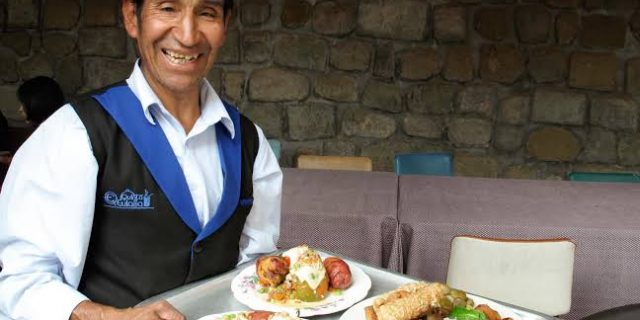Every mission trip includes eating local food–an experience that sounds good in theory but takes on a different meaning when, say, your Morrocan host puts a goat stew in front of you with eyeballs swimming in the gravy.
You pretty much have to do it. The people we go to serve in far away places often show their appreciation by preparing dishes unique to their culture. To refuse would be offensive so one of the informal rules of dining etiquette when on mission is to eat what’s put in front of you.
If you’re in Kenya and monkey is on the menu, dig in. India? Get ready for curry so fiery it will leave the roof of your mouth in tatters. I was once in Thailand and had to eat little squares of congealed blood—from what animal I hadn’t a clue. I smiled, popped them in my mouth then spit them into my napkin as soon as no one was looking.
In Peru, the food is Guinea pig.
You read that right. The national dish here is Guinea pig. Not the cute little things sold by pet stores as souped-up hamsters but larger animals akin to rabbits. They’re native to the region and modern Peruvians inherited a taste for them from their Incan ancestors.
The local name for Guinea pig is “Cuey,” a word that somehow suits the feeling you get when you think about eating one. It sounds like “Ooey”—what a little girl might say when she sees something nasty—or “Cooties”—what a little boy might run away from if that little girl gets too close. Both Americanisms pretty well capture my thoughts about eating a Guinea pig for dinner.
You see Guinea pigs whenever you’re in a restaurant because it looks like every other waiter is carrying one to a hungry diner. From what I can tell, the animal is fried whole then paired with red onions. While eating lunch yesterday I saw the guy at the next table chewing on one covered with cheese, prompting me to ask my Peruvian host, “Would you like cheese with your Cuey?” He didn’t seem to think I was funny.
I don’t have a good feeling about any of this because our mission team has one notable shortcoming. None of the men brought their wives. Without them it will be “Lord of the Flies” all over again. The men will revert to their natural condition and challenge one another to a Cuey-eating contest.
That’s a game I’m happy to lose.
I love these Peruvian brothers and sisters. They’re passionate about their faith, fun to be with and gracious hosts. I couldn’t ask for a better experience than serving the Kingdom alongside of them for these ten days–even if their national dish doesn’t connect with my American tastes.
But maybe one day the shoe will be on the other foot. What if my Peruvian friends visited me–maybe in November–and I want them to try our local cuisine? What better place to give them the full South Carolina culinary experience than in the little town of Sally for the annual Chitlin Strut?
My double take when first encountering a platter full of Guinea pig couldn’t compare with their startled response to a steaming pile of hog intestines pulled out of a vat and slopped onto a paper plate.
One of them might even ask me, “Would you like cheese with your chitlins?”
